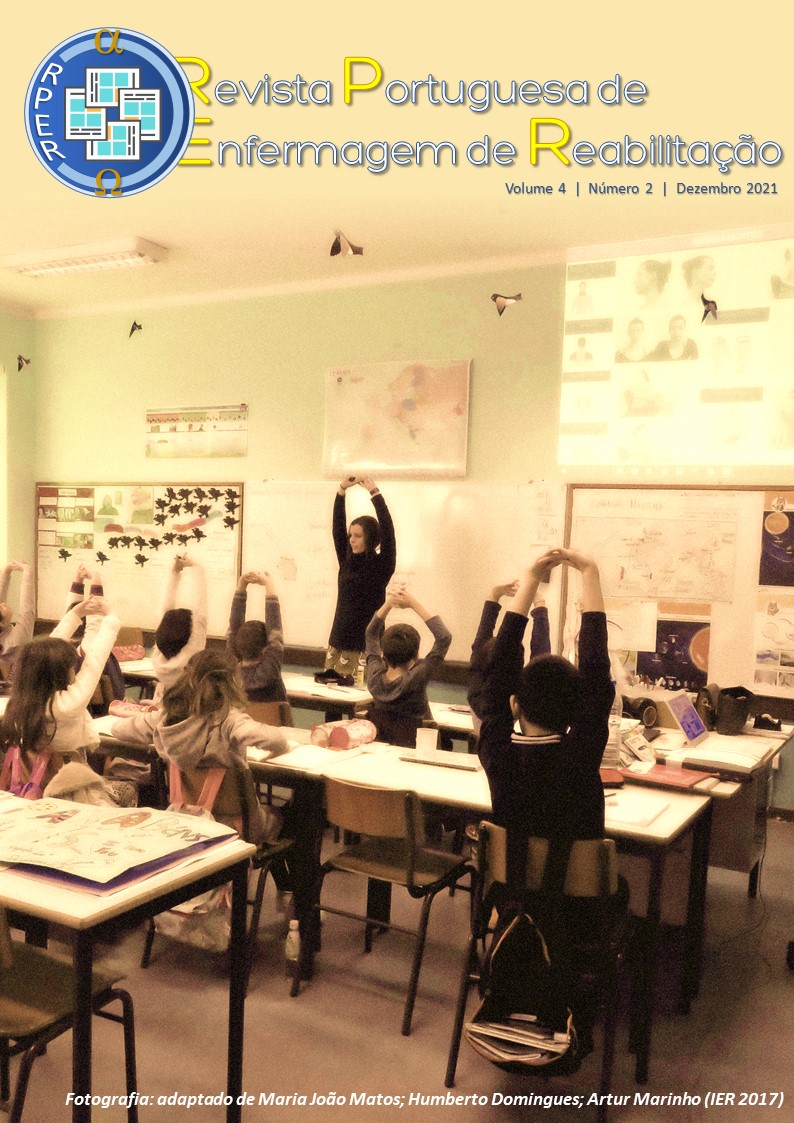Abstract
Introduction: Due to the pandemic by COVID-19, to ensure the safety of health care and to contain its transmission, restrictive measures were taken to keep families away from hospitalized patients. Such measures have implications.
Objective: to analyze, from the speeches of nurses specialized in rehabilitation nursing (EEER), the advantages, disadvantages and contexts of the family's presence in hospitals, in the light of patient safety, in a pandemic context.
Methodology: Qualitative interpretative study based on James Reason's risk model, conducted through semi-structured interviews with 6 EEERs chosen for convenience. Content analysis was performed using the Atlas.ti software. and Bardin's methodology.
Results: 17 categories were identified, grouped according to the representation of the family in patient safety: 10 categories in the view of the family that potentiates security failures and 7 within the family as a security barrier.
Discussion: The EEERs consider the presence of the family as very important for hospitalized patients and for safety care, however, their speeches show that their performance was strongly influenced by the view of the family as a potential disseminator of infection, demonstrating a more negative assessment than positive of this presence for the maintenance of this security, not always supported by the available evidence.
Conclusion: Restrictive measures may be contributing to a setback in the provision of care centered on the hospitalized patient's family. However, there is a lack of data at the national level that allows us to understand whether families in Portugal represent a safety risk in hospitalized patients.
References
World Health Organization. Corona vírus disease (COVID-19) Situation Dashbord: WHO; 2020 [Available from: https://covid19.who.int.
Chen NS, Zhou M, Dong X, Qu J, Gong F, Hang Y. Epidemiological and clinical characteristics of 99 cases of 2019 novel coronavírus pneumonia in Wuhan, China: adescriptive study. The Lancet 2020;395(10223):507–13.
World Health Organization. WHO Director-General's opening remarques at themedia briefing on COVID-19 – 11 March 2020: WHO; 2020 [Available from: https://www.who.int/director-general/speeches/detail/who-director-general-s-opening-remarks-at-the-media-briefing-on-covid-19---11-march-2020.
Lai J, Ma S, Wang Y, et al. Factors associated with mental health outcomes among health care workers exposed to coronavirus disease 2019. JAMA network open. 2020;3(3):e203976-e.
World Health Organization. Final draft Global Patient Safety Action Plan 2021-2030: towards eliminating avoidable harm in health care. Geneva, Switzerland: WHO; 2021.
Reason J. Human error: models and management. British Medical Journal 2000;320(7237):768-70.
Reason JT, Carthey J, Leval MR. Diagnosing “vulnerable system syndrome”: an essential prerequisite to eVective risk management. Quality in Health Care. 2001;10:ii21–ii5.
DIreçao Geral da Saúde. Orientação nº 038/2020 de 17/12/2020 – COVID-19: Acompanhantes e visitas nas Unidades Hospitalares. Lisboa2020. p. 1-5.
Meiers SJ, Swallow V. COVID-19 Pandemic and Family Nursing: IFNA President and President-Elect Offer a Message to Members USA: International Family Nursing Association; 2021 [Available from: https://internationalfamilynursing.org/2020/03/27/covid-19-pandemic-ifna-president-and-ifna-president-elect-offer-a-message-to-members/.
Johnson BH, Abraham MR. Partnering with Patients, Residents, and Families: A Resource for Leaders of Hospitals, Ambulatory Care Settings, and Long-Term Care Communities. Institute for Patient- and Family-Centered Care; 2012.
Clay AM, Parsh B. Patient- and family-centered care: It's not just for pediatrics anymore. AMA J Ethics. 2016;18(1):40-4.
Hanson SMH. Enfermagem de cuidados de saúde à familia : teoria, prática e investigação. 2ª ed. Loures Lusociência; 2005. 497 p.
Diário da República n.º 79/2015, Série II de 2015-04-23: Regulamento do Perfil de Competências do Enfermeiro de Cuidados Gerais, (2015).
Ordem dos Enfermeiros. Regulamento das Competências Especificas do Enfermeiro Especialista em Enfermagem de Reabilitação. Lisboa: Ordem dos Enfermeiros; 2010.
Fortin M-F. Fundamentos e Etapas no Processo de Investigação. Loures2009. 618 p.
Bardin L. Análise de conteúdo. Lisboa: Edições 70; 2000.
Correia TSP, Martins MM, Barroso FF. The Family and Safety of the Hospitalized Patient: An Integrative Literature Review. Portuguese Journal of Public Health. 2020;38:1-12.
Bishop SM, Walker MD, Spivak IM. Family presence in the adult burn intensive care unit during dressing changes. Crit Care Nurs. 2013;33(1):14-24.
Verbeek H, Gerritsen DL, Backhaus R, Boer BS, Koopmans R, Hamers J. Allowing visitors back in the nursing home during the COVID-19 crisis: A Dutch national study into first experiences and impact on well-being. Journal of the American Medical Directors Association. 2020;21(7):900-4.
Munshi L, Evans G, Razak F. The case for relaxing no-visitor policies in hospitals during the ongoing COVID-19 pandemic. CMAJ. 2020.
Ehlenbach WJ, Hough CL, Crane PK, Haneuse SJ, Carson SS, Curtis JR, et al. Association between acute care and critical illness hospitalization and cognitive function in older adults JAMA. 2010;303(8):763-70.
Doherty WJ. Family Interventions in Health Care. Family Relations. 1985;34:129-37.
Padilha JM, Silva RP. Impacte da pandemia por COVID-19 nos Enfermeiros de Reabilitação portugueses. Revista Portuguesa de Enfermagem de Reabilitação. 2020;3(2):102-7.
Institute for Patient-And Family-Centered Care. Family presence during a pandemic: Guidance for decision-making. Bethesda, USA: IPAFCC; 2021.

This work is licensed under a Creative Commons Attribution-NonCommercial-NoDerivatives 4.0 International License.
Copyright (c) 2021 Portuguese Rehabilitation Nursing Journal
Downloads
| Abstract Views | 707 |
|---|
| PDF (Português (Portugal)) | 390 |
|---|
| HTML (Português (Portugal)) | 320 |
|---|





